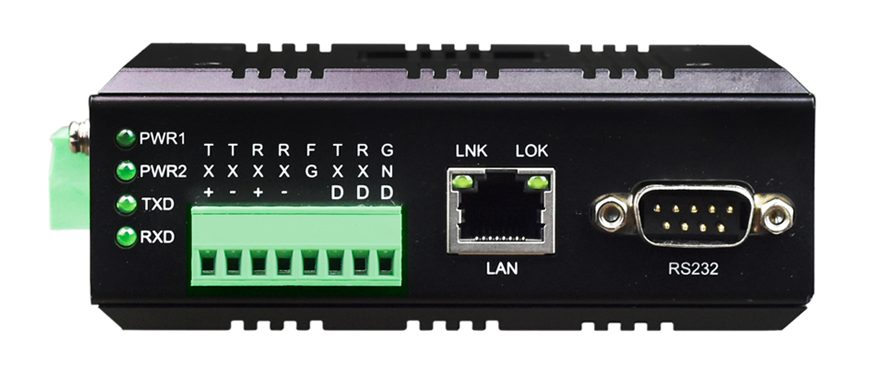What is a serial server?
The role of the serial server device is to provide the function of the serial port to Ethernet, which can convert RS232, RS485, and RS422 serial ports into TCP/IP network interfaces, and maintain two-way transparent transmission of statistical data between RS232/RS485/RS422 serial ports and TCP/IP network interfaces. function. It can make the serial device have the function of TCP/IP network interface immediately, connect the network to carry out data communication immediately and improve the communication distance of the serial device.
The function of serial server
1. Multiple SOCKETs can be connected at the same time, and each SOCKET can be individually configured as TCP Server, TCP Client, UDP Master, UDP Slave, TCP-ZSD, or UDP-ZSD to meet various application scenarios of users.
(1) TCP Server mode – the serial port server listens on the local port and waits for the client to connect. After the connection is successful, it can send and receive data in both directions.
(2) TCP-ZSD UDP-ZSD mode – the TCPUDP protocol, the protocol is compatible with all 2G/3G/4G DTUs, different devices in the same center are mixed, and the SDK is used to quickly build the center.
(3) TCP Client mode – the serial port server actively connects to the user’s server, and can send and receive data in both directions after the connection is successful.
(4) UDP Slave mode – the serial server listens for UDP data on the local port, and sends and receives data with the client that communicated with the last time.
(5) UDP Master mode – the serial server sends UDP data to the configured remote IP and port, and only receives the data of the configured remote IP and port.
2. No need to build a platform
Users can realize data transmission and exchange with other devices without building a platform by themselves.
3. User-defined data package
In TCP Client and UDP Master modes, users can customize login packets, heartbeat packets, and user packet prefixes.
4. The device integrates many network protocols
The serial server device integrates many complex network protocols such as TCP, UDP, DNS, DHCP, PPPoE and SOCKET socket standards, and provides TCP Server, TCP Client, UDP Server, UDP Client, TCP-ZSD, UDP-ZSD various communication protocols for users The serial port device can easily realize the function of network transmission.
5. DHCP automatically obtains an IP address
The serial server device can use DHCP to automatically obtain an IP address, and can automatically obtain an IP address in the local area network. If DHCP fails, the IP address configured by the user will be used.
6. Dynamic domain name resolution
The device supports DNS dynamic domain name resolution and can connect to the server without a fixed IP.
7. Parameter configuration
Serial port server equipment uses a serial port or network to maintain port configuration parameters, supports industrial configuration applications, OPC Server, and supports virtual serial ports. You can view the running status of the device in real-time on the mobile WEB.



